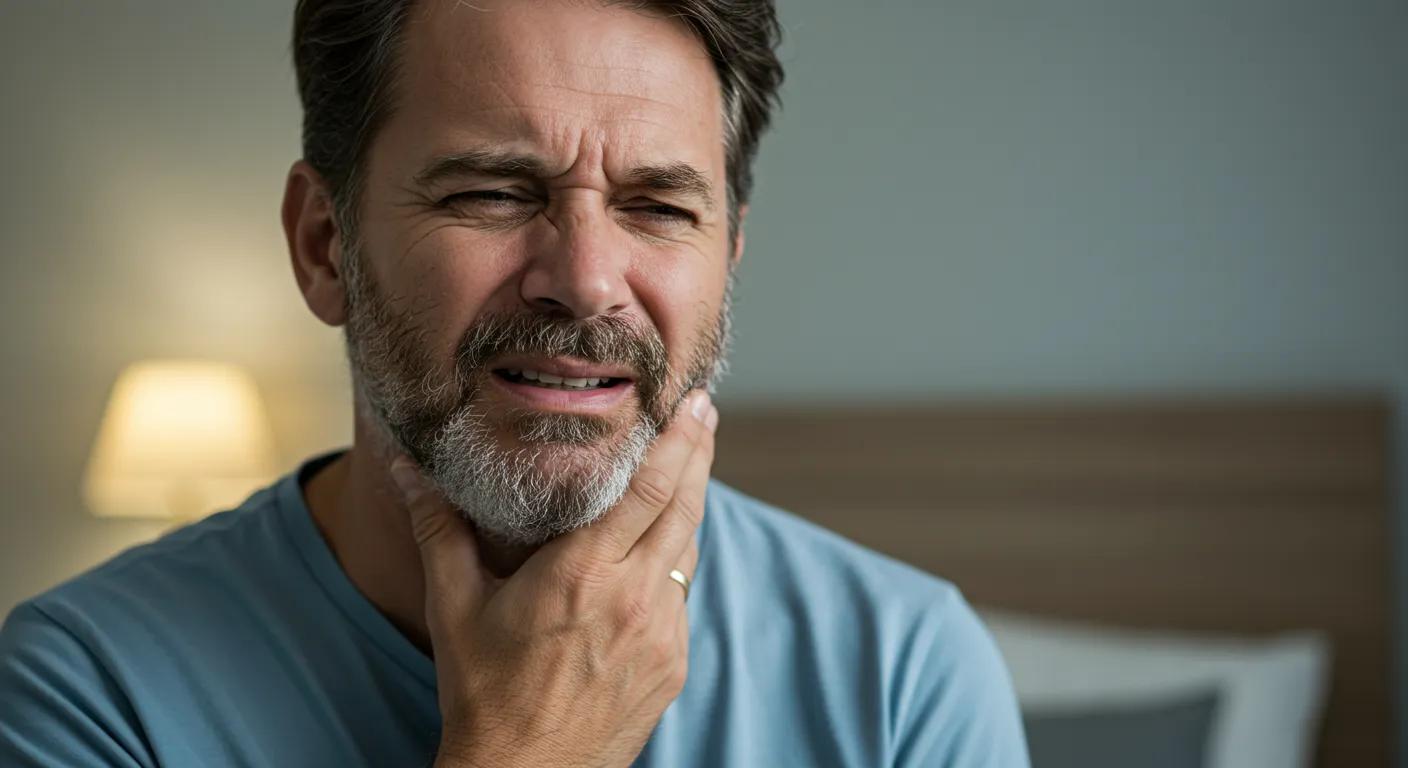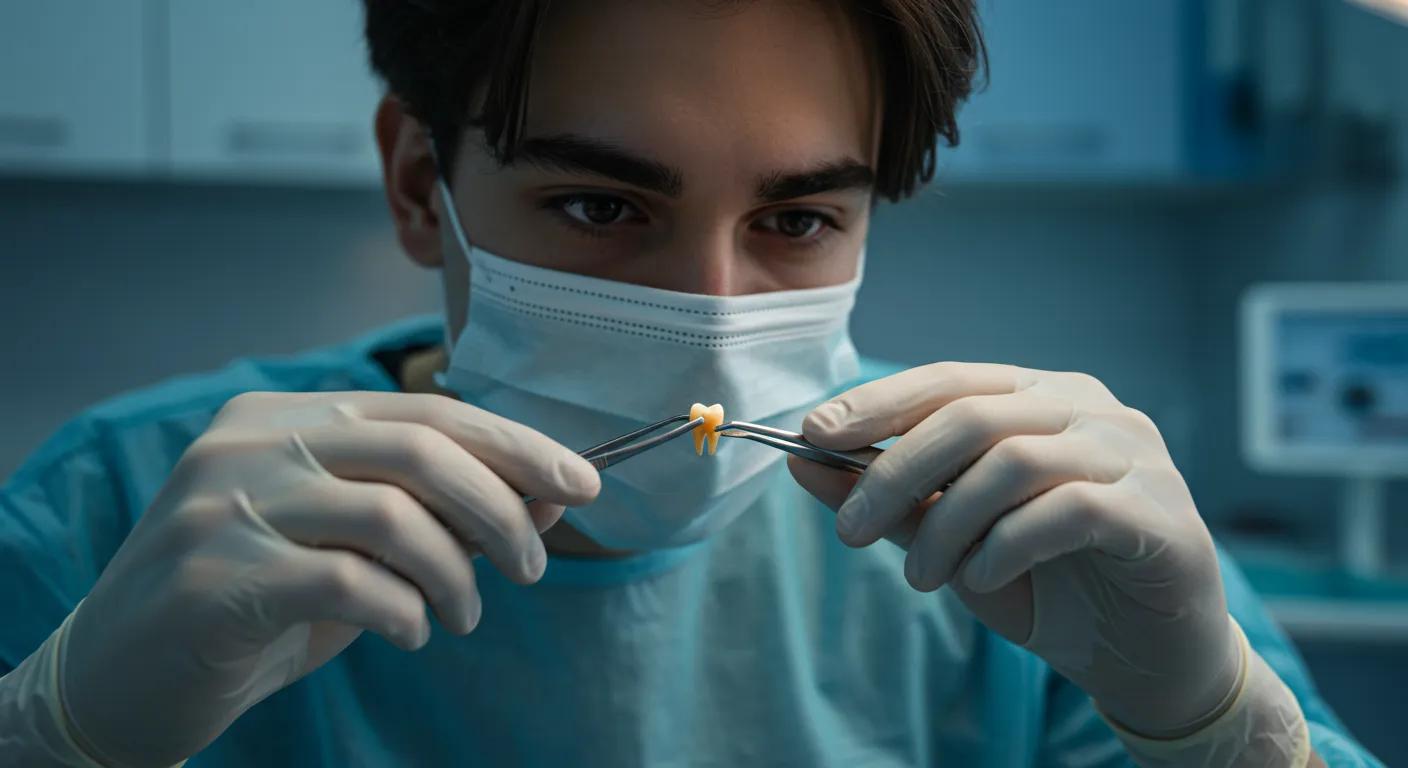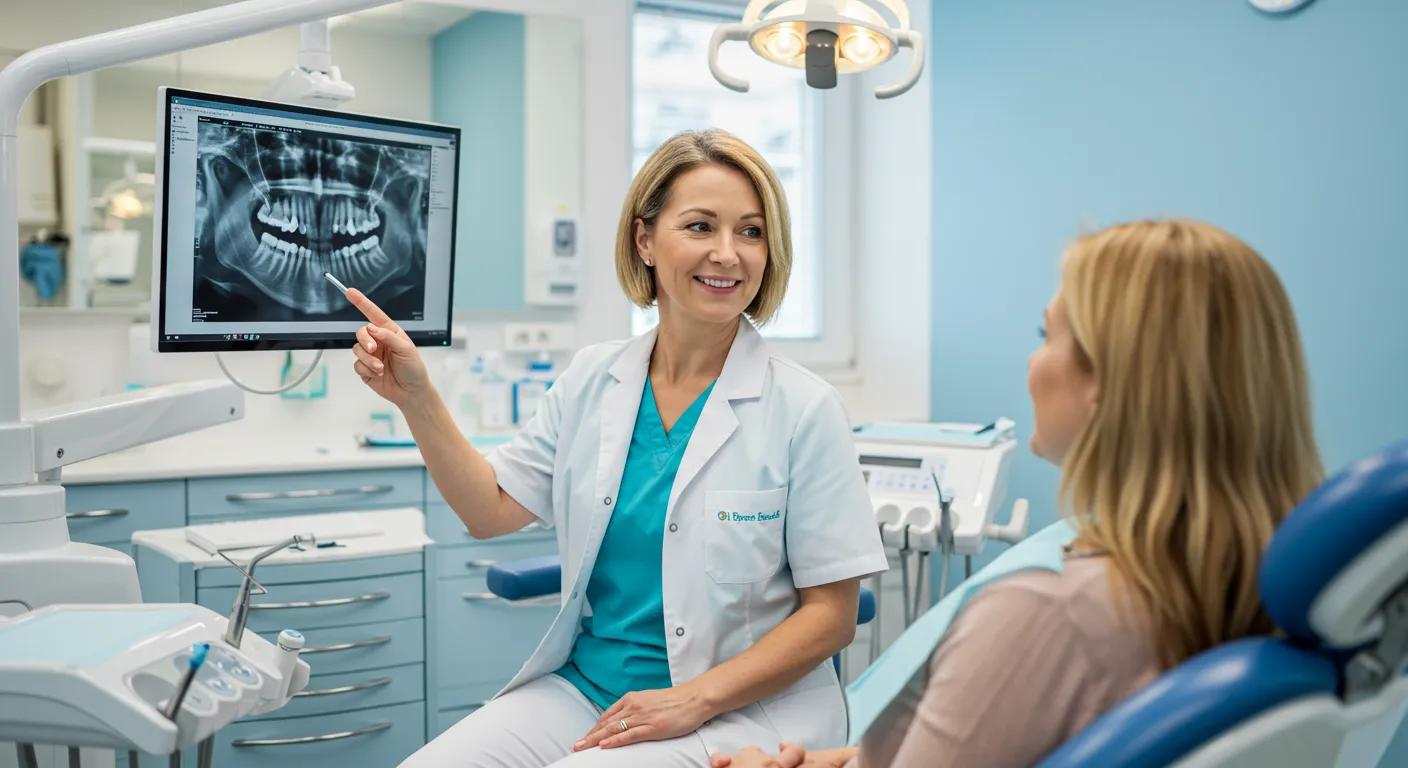A dental emergency is any sudden oral health problem that threatens teeth, surrounding tissue, or causes severe pain; rapid care reduces the risk of permanent damage and serious infection.
This guide explains what counts as an emergency, clear first aid you can perform immediately, and exactly how to access emergency dental care from a local provider, with practical advice for Clontarf residents seeking an emergency dentist.
You will learn to recognise red-flag symptoms such as spreading swelling, uncontrolled bleeding, severe toothache with fever, and the time-sensitive steps for a knocked-out tooth, broken crown, or abscess.
We’ll then outline how Spit Road Dental approaches urgent cases, the Emergency Dental Care service features that matter for Clontarf patients, and realistic booking expectations, including same-day and Saturday availability.
Read on for quick checklists, step-by-step first-aid instructions, comparison tables for common emergencies, and clear contact methods to reduce stress when urgent dental care is needed.
What Are the Most Common Dental Emergencies in Clontarf?
A dental emergency encompasses conditions that require prompt attention because they cause severe pain, risk of infection, or permanent tooth loss. These emergencies commonly include severe toothache, broken or chipped teeth, knocked-out teeth, dental abscesses, and sudden loss of a filling or crown, each needing different urgency levels and first-aid actions. Recognising the emergency type quickly helps you choose the correct immediate action and prioritise whether to seek same-day professional care. The list below summarises the most frequent problems Clontarf residents face and introduces the short reference table that follows for quick comparisons.
Common dental emergencies Clontarf residents should know:
- Severe toothache: Intense, persistent pain that may indicate infection and needs urgent assessment.
- Broken or chipped tooth: Exposes dentine or leaves sharp edges that can cut the tongue and needs prompt stabilisation.
- Knocked-out tooth (avulsion): Time-critical loss where correct handling and transport can permit re-implantation.
- Dental abscess: Localised pus and swelling with fever signal an infection that can spread if delayed.
- Lost filling or crown: Causes sensitivity and risk of further tooth damage; often needs repair within days.
This EAV table gives a quick action-oriented comparison so you can decide next steps.
| Emergency Type | Key Symptoms | Immediate First-Aid | Urgency (time window) |
|---|---|---|---|
| Severe toothache | Throbbing pain, worse on biting, possible fever | Take analgesic per instructions, cold compress, and avoid placing aspirin on gums. | Urgent — same day if severe |
| Broken/chipped tooth | Sharp edge, sensitivity, cosmetic damage | Rinse mouth, cover sharp edge with wax/soft material, cold compress | Prompt — within 24 hours |
| Knocked-out tooth | The tooth is fully displaced from the socket | Handle by crown, rinse, store in milk/saliva, seek re-implantation | Immediate — ideally <1 hour |
| Dental abscess | Swelling, pus, bad taste, fever | Rinse with warm salt water, avoid probing, seek urgent care | Urgent — same day |
| Lost filling/crown | Sensitivity, food packing | Save restoration, cover exposed area with temporary dental cement | Prompt — within 48 hours |
This quick guide helps you triage common emergencies and decide whether immediate professional intervention is required; the next section explains symptoms that indicate a severe toothache.
What Symptoms Indicate a Severe Toothache or Dental Pain?

A severe toothache is defined by persistent, intense pain that interferes with sleep, eating, or daily activities and often signals pulpal inflammation or infection. Typical red flags include sharp, throbbing pain that is constant or worsens with heat, associated facial swelling, fever, difficulty swallowing or breathing — all signs that professional assessment is needed quickly. Over-the-counter pain relief and cold compresses can help while you arrange care, but masking symptoms with repeated analgesia can delay diagnosis. Recognising systemic symptoms leads naturally to understanding how to protect a broken or chipped tooth before treatment.
How Should You Handle a Broken or Chipped Tooth Emergency?
A broken or chipped tooth should be stabilised to prevent soft-tissue injury and further enamel loss by rinsing with warm water and covering sharp edges with soft wax or sugar-free chewing gum. Avoid biting on the damaged side, apply a cold pack to reduce swelling, and keep any fragments in a clean container to bring to the dentist. Temporary measures reduce pain and soft tissue trauma, but definitive repair—bonding, crown, or root canal—depends on the extent of structural and pulpal damage. Preserving fragments and seeking same-day assessment improves restoration options.
What Are the Immediate Steps for a Knocked-Out Tooth?

An avulsed (knocked-out) permanent tooth is a time-sensitive emergency where correct handling and storage greatly increase the chance of successful re-implantation. Handle the tooth by the crown (not the root), rinse briefly with water if dirty, and ideally reinsert into the socket; if that’s not possible, keep the tooth moist in milk or the patient’s saliva and get to urgent dental care immediately. The critical re-implantation window is within the first hour for best outcomes, and prompt professional care determines whether the tooth can be saved. Knowing these steps prepares you to act fast and preserve the tooth for potential re-implantation.
How Can You Recognise a Dental Abscess or Infection?
A dental abscess presents with localised facial swelling, severe throbbing tooth pain, a bad taste or discharge in the mouth, and often systemic signs like fever or malaise; this combination suggests spreading infection. Because abscesses can progress rapidly and pose systemic risks, you should avoid attempting to lance or drain them yourself and instead rinse with warm salt water and seek urgent professional assessment. Clinicians may need to drain the abscess, prescribe antibiotics and perform definitive dental treatment such as root canal or extraction. Early recognition and treatment prevent dangerous spread and systemic complications.
What Should You Do If You Lose a Filling or Crown Suddenly?
When a filling or crown is lost, the exposed tooth surface can be sensitive and vulnerable to decay; collecting the restoration and keeping it safe helps your dentist evaluate re-cementation options. Temporary dental cement, sugar-free gum or a small piece of cotton can protect the tooth until you arrange repair, and avoid sticky or hard foods that could worsen damage. If pain or swelling develops, seek urgent attention; otherwise, arrange repair within a few days to prevent further structural loss. Prompt professional restoration preserves tooth integrity and reduces the risk of more invasive treatment.
How Can Spit Road Dental Help You with Emergency Dental Care in Clontarf?
Spit Road Dental offers an Emergency Dental Care service focused on fast pain relief, accurate diagnosis and patient comfort for residents near Clontarf and across Mosman. The practice emphasises advanced diagnostic technology for efficient treatment planning, flexible appointment options including Saturday availability, and strict sterilisation procedures to protect patients. These features combine to deliver practical urgent care: rapid triage, targeted pain control, and the full scope of emergency procedures from temporary repairs to extractions when necessary. If immediate clinical treatment is required after first-aid, you can expect empathetic assessment and evidence-based management from the clinic team.
Spit Road Dental’s Emergency Dental Care service highlights include:
- Exceptional dental care and patient comfort to reduce anxiety during urgent visits.
- Advanced technology for faster, more accurate diagnosis and targeted treatment.
- Flexible appointments with Saturday availability and a convenient location near public transport and a shopping centre.
- Experienced and reassuring care
- With long-standing chairside calm.
- Strict sterilisation procedures to ensure patient protection.
These practice strengths reassure patients seeking urgent care and lead into the next subsection detailing the technology used for fast diagnosis.
Why Choose Spit Road Dental as Your Emergency Dentist in Clontarf?
Choosing Spit Road Dental for emergency needs provides local access to a practice that emphasises patient comfort and clinician experience. The clinic’s approach focuses on calming chairside communication, rapid pain control and continuity of care so patients feel reassured during urgent treatments. Multi-generational relationships in the community and consistent infection-control practices support trust when quick decisions are necessary. This trustworthy foundation supports the clinic’s use of modern diagnostics for efficient emergency assessment.
What Advanced Technology Does Spit Road Dental Use for Emergency Diagnosis?
Spit Road Dental uses contemporary diagnostic tools such as digital imaging and intraoral assessment equipment to speed accurate diagnosis and reduce unnecessary procedures. Faster imaging and enhanced visualisation help clinicians identify fractures, infections and root issues quickly, which informs targeted, less invasive emergency treatments. These technologies shorten chair time and improve treatment precision, benefiting patients who need prompt relief. Efficient diagnosis naturally improves appointment scheduling and response times for urgent cases.
How Do Flexible and After-Hours Appointments Work at Spit Road Dental?
Spit Road Dental provides flexible appointment options aimed at reducing wait times for urgent presentations, including same-day slots where clinically possible and Saturday availability, as noted in the practice features. When contacting the practice, prepare succinct details about symptoms, incident timing and any relevant medical notes to speed triage and secure an appropriate appointment. Practical expectations set upfront reduce anxiety and help match urgency with the right clinical response. Clear booking procedures support Clontarf residents seeking rapid access to care.
What Patient Comfort Measures Are in Place During Emergency Visits?
Patient comfort at Spit Road Dental is prioritised through calm chairside manner, straightforward pain-control options and a focus on patient reassurance during urgent care. Pain is managed promptly with local anaesthesia or temporary stabilisation, and clinicians explain steps clearly to reduce procedural anxiety. Strict sterilisation and infection-control protocols further protect patients and support a safe environment for emergency treatment. These comfort measures help patients tolerate urgent procedures and move toward recovery with confidence.
What Immediate First-Aid Steps Should You Take Before Seeing an Emergency Dentist?
Immediate first-aid reduces risk and buys time before professional care, focusing on pain relief, infection minimisation and tooth preservation depending on the emergency. The guidance below provides concise, step-by-step actions for common scenarios and a practical table to help you act correctly under pressure. Follow the simple do/don’t rules and seek urgent care when red-flag signs like spreading swelling, breathing difficulty or uncontrolled bleeding occur.
If you need quick steps for each problem, the numbered list below gives clear, time-sensitive actions.
- Severe toothache: Rinse with warm salt water, take appropriate OTC analgesia per instructions, and avoid applying aspirin to gums.
- Knocked-out tooth: Handle by the crown, rinse gently, place in milk or saliva, and get to urgent care immediately.
- Broken tooth: Rinse mouth, cover sharp edges with wax or sugar-free gum, keep fragments and seek prompt dental repair.
- Bleeding soft tissue: Apply gentle pressure with sterile gauze, use a cold compress externally, and seek emergency care if bleeding continues.
- Lost filling/crown: Save the restoration, use temporary dental cement if available, avoid sticky foods and book repair.
The table below summarises first-aid choices, common mistakes to avoid and when to escalate to urgent dental assessment.
| Problem | First Step | Do NOT do | When to see dentist |
|---|---|---|---|
| Severe toothache | Rinse with warm salt water and take an analgesic | Do not delay professional assessment if fever/swelling | Same day for severe pain |
| Knocked-out tooth | Keep the tooth moist in milk or saliva | Do not scrub the root or wrap it in tissue | Immediate — ideally <1 hour |
| Broken tooth | Cover sharp edges, preserve fragments | Do not probe a fracture with sharp objects | Within 24 hours |
| Bleeding | Apply firm pressure and a cold compress | Do not use tourniquets or rough probing | If bleeding is uncontrolled, seek emergency care |
| Lost filling/crown | Protect exposed dentine with temporary cement | Do not ignore persistent sensitivity | Within 48 hours or sooner if painful |
How to Manage Severe Toothache Pain at Home Before Your Appointment?
For severe toothache, safe short-term pain management includes rinsing with warm saline, using recommended over-the-counter analgesics and applying a cold pack externally to reduce swelling. Avoid placing topical aspirin or unverified remedies directly on gums because they can cause tissue damage and mask infection. If pain persists despite analgesia or is accompanied by fever, swelling or difficulty breathing, seek immediate professional care. Proper home measures reduce discomfort while you arrange an urgent dental assessment.
What Are the Best First-Aid Practices for a Knocked-Out Tooth?
When a permanent tooth is knocked out, immediate correct handling dramatically improves the chance of re-implantation; handle by the crown, rinse debris gently, and store the tooth in milk or the patient’s saliva. Ideally, reinsert the tooth into the socket and hold it in place while getting to a dentist, but do not force a damaged tooth. Time is critical — aim for professional care within 60 minutes to maximise successful re-implantation outcomes. Quick, correct action preserves the tooth and informs the dentist’s next steps.
How Can You Control Bleeding from Soft Tissue Injuries in the Mouth?
Control bleeding by applying steady, gentle pressure with sterile gauze to the wound, maintaining pressure for 10–15 minutes and using a cold compress externally to reduce swelling. Avoid vigorous rinsing or probing the wound, which can disrupt clot formation, and seek emergency care if bleeding is heavy, recurrent or associated with signs of shock. Proper pressure and cold application stabilise most soft-tissue injuries and allow safe transit to professional care. If bleeding continues despite these measures, urgent clinical or hospital care may be necessary.
What Temporary Measures Can You Use for a Lost Filling or Crown?
If a filling or crown falls out, protect the exposed tooth with temporary dental cement or sugar-free gum and save the restoration in a clean container to bring to the dentist. Avoid sticky or hard foods and use desensitising toothpaste to reduce sensitivity while waiting for repair. If the tooth becomes painful or swollen, treat it as urgent and seek same-day assessment; otherwise, arrange restoration promptly to prevent further decay or fracture. Temporary protection reduces discomfort and preserves options for conservative repair.
How Do You Book an Emergency Dentist Appointment in Clontarf?
Booking for urgent care should be direct, clear and prioritise speed; know the fastest contact method and what information to provide to get appropriate triage and an appointment. The following table outlines contact channels, how to use them and typical response expectations so you can choose the quickest route when time matters. After understanding contact options, the section explains expected appointment timing and the clinic’s relative location for Clontarf residents.
When contacting for urgent care, be prepared with these details:
- Patient name and age.
- Brief description of the problem and time of the incident.
- Any relevant medical conditions or allergies.
This preparation speeds triage and helps secure an appropriate appointment quickly.
| Contact Method | How to Use | Typical Response Time |
|---|---|---|
| Phone call | Provide a concise symptom summary and the incident time | Fastest for emergencies; immediate triage if available |
| Online booking or enquiry | Use succinct details and mark as urgent | Response within hours, depending on availability |
| In-person visit | Attend the reception with clear incident details | Triage on arrival; wait times vary |
What Are the Best Ways to Contact Spit Road Dental for Urgent Care?
The fastest way to secure urgent attention is to call and give a brief, structured summary: patient name, problem, time when it started, and any bleeding or breathing concerns. When calling, state clearly that this is an emergency so the team can triage and advise on same-day slots or immediate instructions. If phone contact is not possible, use an online enquiry describing urgency and key details; the practice aims to respond promptly and direct patients to appropriate care. Having this information ready reduces delays and helps the clinic match resources to clinical need.
How Quickly Can You Expect an Emergency Appointment?
Emergency appointment speed depends on time of day, case severity and existing bookings; many urgent issues can be seen same day or next available slot, while life-threatening airway or uncontrolled bleeding concerns should go to hospital emergency services. If an immediate dental appointment is not available, clinicians will advise interim measures and alternative urgent care pathways. Preparing clear symptom details and arriving promptly improves the chance of same-day treatment. Understanding these factors helps you choose the right immediate action and reduces uncertainty.






